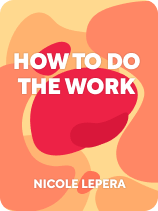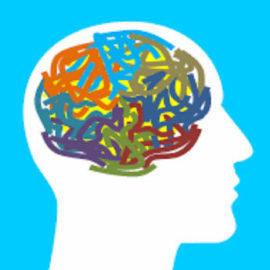

This article is an excerpt from the Shortform book guide to "How to Do the Work" by Nicole LePera. Shortform has the world's best summaries and analyses of books you should be reading.
Like this article? Sign up for a free trial here.
What is the connection between stress and hormones? How could examining your childhood help you to lower your high stress levels?
Nicole LePera, author of How to Do the Work, wants everyone to become more conscious of how childhood conditioning impacts mental and physical health. In her book, she aims to teach you how to develop positive patterns that improve your well-being by decreasing stress.
Keep reading to find out the link between stress, hormones, and a dysfunctional childhood, according to LePera.
A Dysfunctional Childhood, Stress, and Hormones
Automatically engaging in defensive patterns you learned in childhood risks increasing your stress levels and damaging your health. LePera claims that the stress hormones you released during emotional distress as a child trained your subconscious mind to categorize many safe situations as threatening and misinterpret your environment. As a result of the stress and hormones, it now perceives threats where there are none and keeps your body in a heightened state of stress that damages your health.
She explains that each time your subconscious mind perceives a threat, it reacts as if you’re in physical danger and allocates resources to help return you to safety—by releasing stress hormones that provide a burst of energy and prepare your body to fight, take flight, or freeze. Reacting to real physical danger burns through these stress hormones and leaves no trace of them in your body. However, since the threats your subconscious mind prepares you for rarely put you in physical danger, these stress hormones don’t get used up, and instead, they linger in your body.
(Shortform note: We’ve already established how your subconscious mind relied on your childhood emotions to identify what types of situations pose a threat. Further, research reveals that your subconscious mind makes decisions about how you choose to feel or act before your conscious mind even perceives the need to make a decision. This means that your subconscious mind reacts to threats before you get a chance to consciously assess them. For example, your fear of dogs as a child made your subconscious mind categorize all dogs as threats. And, even if you’ve consciously decided that most dogs are safe, you’ll still feel the rush of stress hormones each time you see one.)
The more often your subconscious mind perceives threats, the more these stress hormones accumulate in your system and interfere with your body’s ability to regulate itself and maintain a state of balance. LePera argues that this imbalance contributes to a number of emotional, psychological, and physical symptoms:
- Emotional: Mood swings; feelings of anxiety, rage, or panic
- Psychological: Confused or overwhelming thoughts that make it difficult to think rationally or engage with others
- Physical: Digestion issues, autoimmune disorders, chronic fatigue, muscle tension or aches, insomnia or nightmares, and migraines
| How Stress Hormones Damage Your Mental and Physical Health Research validates LePera’s claim that chronic stress creates an accumulation of stress hormones, and these hormones contribute to numerous mental and physical symptoms. Chronic stress affects your: – Hormones: Leads to increased heart rate and high blood pressure – Immune system: Makes you more vulnerable to illnesses and infections – Sleep: Prevents your mind from relaxing – Brain: Increases cognitive decline – Digestion: Damages your gut (indigestion, vomiting, constipation) Additionally, stress compels you to act irrationally: When you feel stress, your amygdala acts as if you’re in danger—it ensures that you respond automatically to threats by inhibiting the thinking part of your brain (the hippocampus). This makes it difficult for you to think objectively about what you’re experiencing—thus leading to irrational responses. Continuing with the preceding example, while you consciously know that most dogs are safe, you’re unable to access the part of your brain that holds this knowledge. As a result, you give in to your instinctive fear and automatically carry out your “irrational” defensive pattern. This behavior is irrational because you consciously know that there’s nothing to fear. |

———End of Preview———
Like what you just read? Read the rest of the world's best book summary and analysis of Nicole LePera's "How to Do the Work" at Shortform.
Here's what you'll find in our full How to Do the Work summary:
- How childhood conditioning impacts your mental and physical health
- How to develop positive patterns that improve your well-being
- Tools to feel happier, healthier, and more in control of your life






